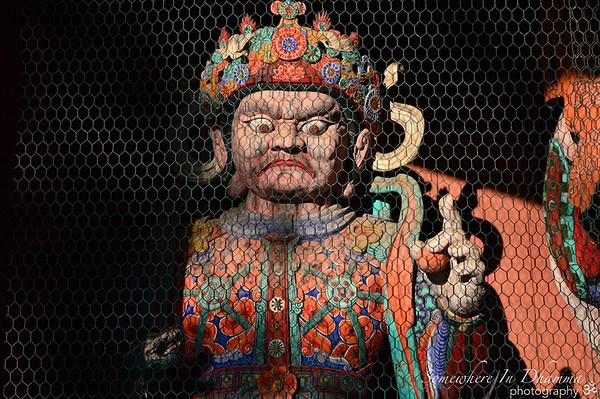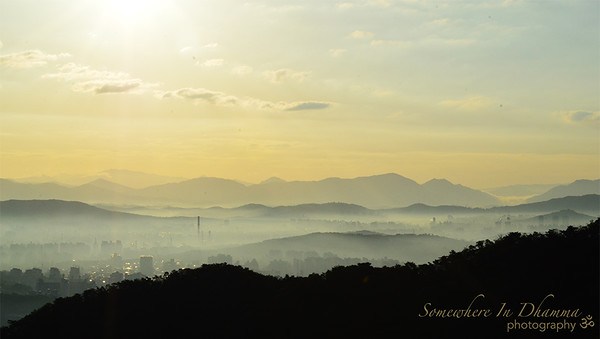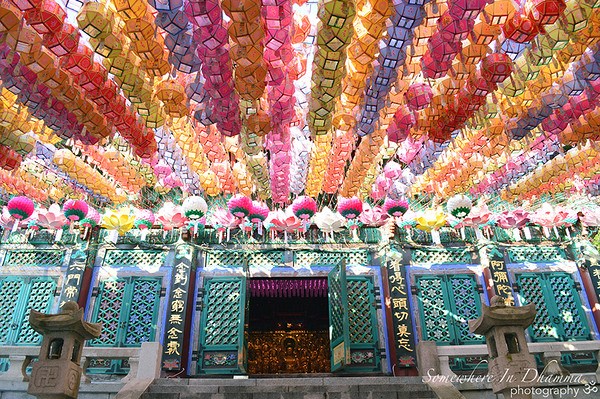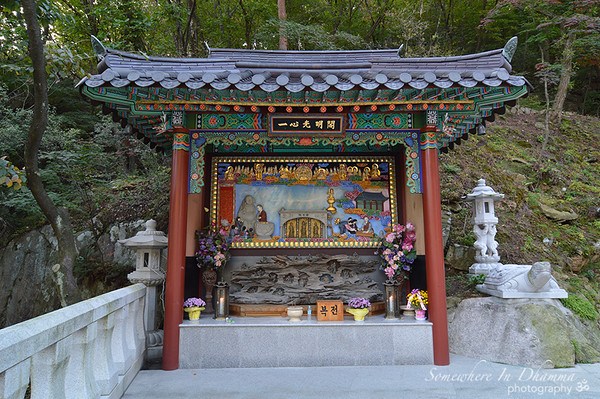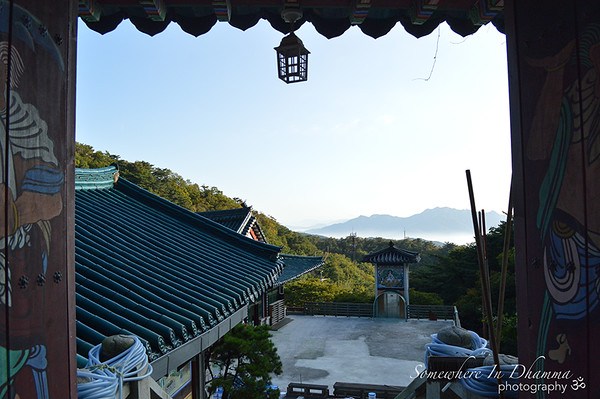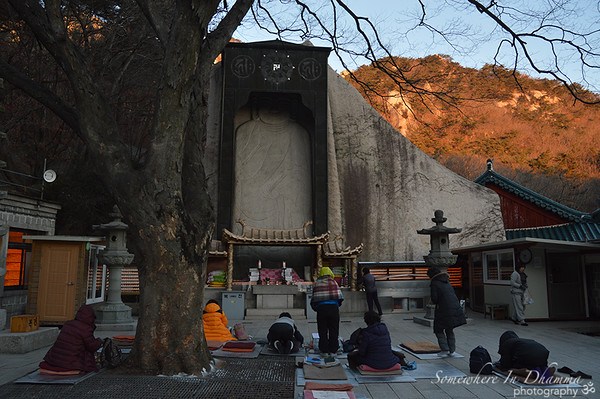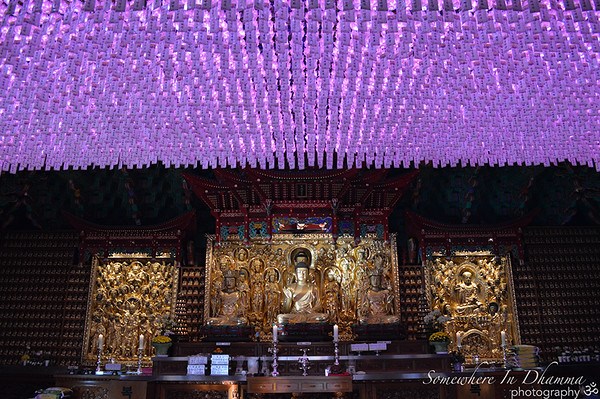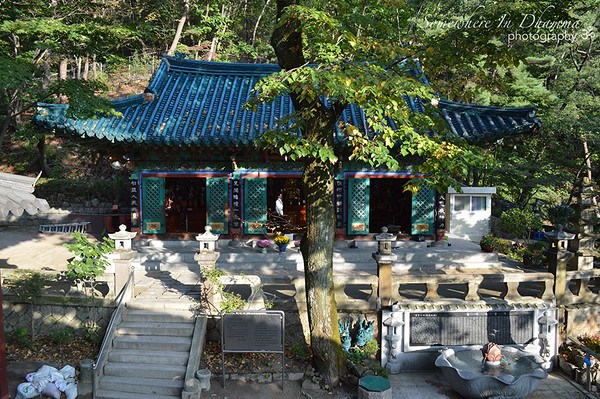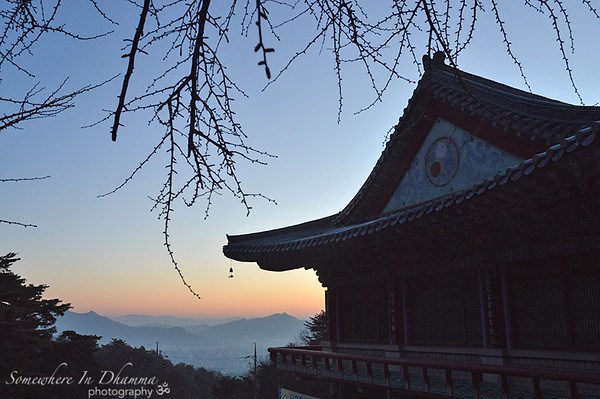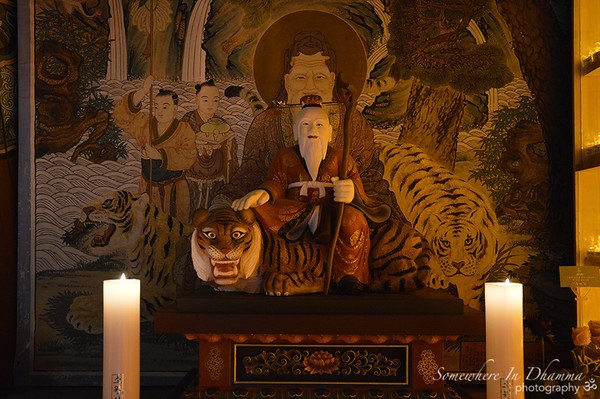Doseonsa Temple – 도선사 (Mt. Samgaksan, Seoul)
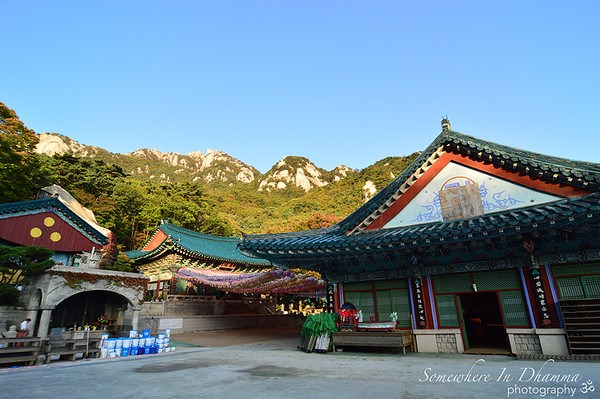
Temple History
Hi, Everyone! This is Giuseppe with my first contribution to the site. It’s a bit longer than I anticipated, but this temple is jam packed with sights, artifacts, and history. Even more than I was able to mention. I hope you enjoy!
Last year, I asked a friend of mine to recommend a temple to visit in Mt. Bukhansan in Seoul. “Doseonsa is supposed to be nice,” he replied. Looking it up, it did indeed seem like a nice temple with a wealth of history and attractions. When I managed to finally visit it, “nice” turned out to be a massive understatement!
It was first dedicated in 862 A.D., by the renowned monk Doseon-guksa. He had a highly developed ability to read the flow of energy through the mountains and choose the most auspicious placement for temples. Even after Doseon-guksa’s death, Taejo Wang Geon, the founding-king of the Goryeo Dynasty, ordered that no temple should be constructed or expanded except those recommended by Doseon-guksa in the documents he left behind. I can only believe that the placement of Doseonsa Temple, below the triple peaks of the sacred guardian Samgak (Three Horn) Mountain, is a powerful one. Late in the Joseon Dynasty, around 1870, Doseonsa Temple was named the representative temple of Korea. It remains the largest temple complex in Mt. Bukhansan and Seoul’s most historically significant.
Temple Layout
The first object of interest (though it’s at the far rear of the temple) is the 8.4 meter Buddha carved into a triangular chunk of granite protruding from the ground. According to legend, Doseon-guksa carved it using only his wooden staff and there are no signs of chisel marks. The carving is now enshrined in a small, walled-off area where a seemingly perpetual group of laypeople are bowing, praying, or reciting sutras.
The entrance to the temple is by the shuttle parking lot, where you immediately come upon the Cheonwangmun Gate. They are carved with fierce expressions, enough to make me wonder whether the chicken wire is meant to keep the pigeons out or keep them in.
Continuing through the gate, the road soon bends, giving the first glimpse of the temple with the massive granite peak looming beyond. There is also a spectacular view of the northern tip of Seoul, perfect for watching the sunrise, framed with mountains fading into the horizon.
Just before reaching the actual temple complex there is a poignant Jijang-bosal, standing tall on a granite pedestal. Among many things, Jijang-bosal is known as a guardian of children and is often depicted holding a child. This statue has a child at his side, reaching up to tug on his robe, but the main feature that caught my attention was the fetus held up in his right hand. After first seeing it, I learned that he is also the guardian of aborted fetuses.
The road continues, steeply, up past the massive building that houses a museum, offices, dining hall, and a small Cheonbul-jeon, Thousand Buddha Hall, crowned with a large Geum-dang, then eventually leads into the courtyard. Centered at the back of the courtyard, facing the Geum-dang is the Daeung-jeon (Dharma Hall) with the beautiful Samseong-gak (Three Spirit Shrine) to the immediate left and the Jijang-jeon on its own separate terrace below, a bit further to the right.
Inside the Dharma Hall is quite stunning, with the glow of pink lanterns illuminating the hall and reflecting off of the three gold shrines, giving the small figures a beautiful pink glow that complements the gold to make a unique aesthetic.
Below the Samseong-gak are low-relief standing Bodhisattvas, cast presumably in bronze and are quite stunning. They include Bohyeon-bosal, Gwanseeum-bosal, and Munsu-bosal, elegantly holding a cup of tea. Around the corner, tucked into the far corner of the structure is a unique Gwaneum-jeon, with the object of worship being a low-relief stone carving of the Bodhisattva and the zig-zagging walls lined with rows of small replicas of the Buddha carving outdoors.
Entering the Samseong-gak, there is a nice Sanshin (Mountain Spirit) statue, sitting on a tiger, with an even nicer Sanshin painting behind it, with two tigers, one yellow and one white. In the middle is a Chilseong-yeorae-bul (The Seven Stars). But it’s really the stone Dokseong statue on the right that steals the show. Though it’s known as Dokseong (The Lonely Saint), it’s style suggests that it was likely originally part of a 16 statue set of Arhats (Buddha’s prime disciples) and at some point in time became separated. But, as it’s long been known as Dokseong, it’s now known as a rare example of him carved in stone.
In the Jijang-jeon, on the right, the main points of interest are the portraits enshrined inside. On the left are President Park Chung Hee, South Korea’s most notorious dictator, and Yuk Yeong Su, parents of the president, Park Geun Hye. On the left side is Hyundai Chairman Chung Ju Yung. I think it’s an interesting display of South Korea’s love/hate relationship with President Park, for his portrait to be enshrined at such a highly revered temple. Though his means were ruthless, he is credited with having pulled the South out of the mud in the decades following the war. “You can spit on my grave,” he famously spoke. First, Yuk Yeong Su was killed during an attempted assassination, then President Park was was assassinated in October, 1979. It’s said that he was a devout Buddhist, though, judging by his rule, he failed to truly grasp the teachings.
Heading across, now, to the large Geum-dang Hall, there is a set of small, but masterfully carved Buddhas. When two of the original set were damaged by fire, they were replaced, in 1740, by Master Monk In Seong and his apprentice, Master Monk Chi Jung. Together, they were known as the premier sculptures of their day. There is a distinctive style, especially in their facial features that give them a recognizable style. The Amita-bul (center) and Daesaeji-bul (left) were the Masters’ work. The Gwanseeum-bosal to the right was from the original set. On the far right wall is a large painting of Cheongdam Daejongsa, a very prominent monk of the 20th Century, who led the Korean Buddhist revival here at Doseonsa Temple. The museum below the Geum-dang is the Cheongdam Daejongsa Memorial Hall, where you can see his personal remains, including his robes, calligraphy set, a dusty old Nikonama camera set, and two staffs that give the impression that they may be holding some magical powers inside. The real treat, though, was seeing his amazing calligraphy on display in the hall.
Across from the Geum-dang, heading there is a trail that leads into the hillside, past the bell pavilion and to a large granite staircase with four terraces, including a statue of Cheongdam Daejongsa, a memorial stone on the back of a dragon-turtle that reminded me A LOT of Bowser from Super Mario Bros, and finally an impressive stone pagoda encircled by a wall of small Buddhas, and a seated Jijang-bosal overlooking in the center. The granite rail surrounding the pagoda has several dragon heads poking up, to add some interesting detail.
There are a few other things to see, but I’ll leave them for you to discover.
How To Get There
There is a free shuttle bus up to the temple entrance from across the street from the Uidong bus terminal, or it’s about a 40 minute walk. Several green and blue buses will get you to Uidong, including 151 and 109 (the last stop for both). 109 passes in front of Gyeongbokgung and Changdeokgung Palaces early in their routes though I caught it at the Jogyesa bus stop. 151 and 109 can both be caught at Mia Station, as well.
Overall Rating: 10/10
You will not find a better temple than Doseonsa Temple in the Seoul area for its combination of beautiful setting, historical significance, and wonderful artifacts. It also has ties to two hugely significant Seon Masters. And depending on where you live in the city, it’s really not difficult to get to.
